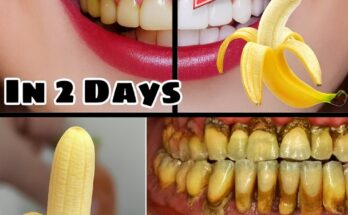Toothpaste is essential for maintaining oral hygiene, preventing tooth decay, and eliminating bad breath. With so many brands and varieties available, it can be overwhelming to choose the right one. One feature you may have noticed is the colored stripe on toothpaste tubes. Here’s a breakdown of what these colors signify and how they can guide your selection.
The Meaning Behind the Colored Stripes
Red Line
A red stripe on a toothpaste tube typically indicates a combination of natural and synthetic ingredients. This type of toothpaste aims to balance natural elements with necessary artificial additives, such as fluoride for cavity protection. While these toothpastes can be effective, those seeking a chemical-free lifestyle should carefully review the ingredient list to understand each component’s role.
Green Line
A green stripe signifies that the toothpaste is made entirely from natural ingredients. This means it contains no artificial chemicals, medications, or whitening agents. Green-striped toothpaste is ideal for individuals who prefer an organic approach to oral care, utilizing ingredients like baking soda, essential oils, and herbal extracts. These natural components effectively clean teeth and freshen breath without synthetic additives.
Blue Line
Toothpaste with a blue stripe indicates a blend of natural ingredients and medicinal additives. This could include whitening agents or pain relievers, providing extra benefits beyond basic cleaning. For example, these toothpastes might contain hydrogen peroxide for whitening or potassium nitrate for sensitivity relief, catering to specific dental needs while still incorporating some natural elements.
Black Line
A black stripe on a toothpaste tube signifies that the toothpaste is made entirely from artificial chemicals. While these synthetic ingredients can effectively address advanced dental issues, such as intensive plaque removal or whitening, they may raise concerns about long-term use. It’s advisable to limit the use of such toothpastes and consider alternating with more natural options.
continued on next page
The Importance of Ingredient Awareness
While the colored stripes provide a helpful guide, it’s crucial to examine the ingredient list for a deeper understanding of what you’re using. Here are some common ingredients and their implications:
Fluoride: Known for its cavity-preventing properties, fluoride strengthens enamel but can lead to dental fluorosis in excessive amounts, especially in children.
Triclosan: An antibacterial agent that reduces gum disease, though its safety is debated due to potential hormone-disrupting effects.
Sodium Lauryl Sulfate (SLS): A foaming agent that helps remove debris; however, some individuals may find it irritating.
Preservatives and Flavorings: These maintain toothpaste stability and taste but can include artificial chemicals that some may prefer to avoid.
Making an Informed Choice
When selecting a toothpaste, consider your specific dental needs and personal preferences. Whether you opt for:
Green Stripe: For all-natural ingredients.
Blue Stripe: For medicinal benefits.
Red Stripe: For a balanced approach.
Black Stripe: With caution, for powerful cleaning.
Understanding what’s inside your toothpaste is essential for making an informed choice.
Conclusion
The colored stripes on toothpaste tubes serve as a quick reference for the types of ingredients they contain, helping you make informed decisions about your oral care products. Green indicates all-natural ingredients, blue signifies a mix of natural and medicinal, red represents a blend of natural and synthetic, and black denotes entirely artificial components. By understanding these codes and paying attention to ingredient lists, you can choose a toothpaste that aligns with your health goals and personal preferences, empowering you to take charge of your oral health.



